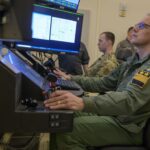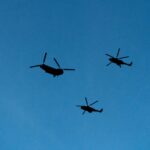The Indian Navy has fought hard to keep its carrier aviation alive after retiring the Sea Harrier. MiG-29K fighters now fill that hole on INS Vikramaditya and the soon-to-sail INS Vikrant. Admiral Sunil Lanba told reporters on the eve of Navy Day that the spares drought and maintenance snags dogging the fleet are “behind us for good.” He stressed that every outstanding invoice with Russian suppliers has a clear payment path despite U.S. sanctions.
A 2016 Comptroller and Auditor General report painted a grim picture: only 38 percent of jets could fly, many engines sat grounded, and the fly-by-wire flight-control chain malfunctioned under carrier-landing stress. Engineers rebuilt wiring looms, replaced corroded fasteners, and revised the software that stabilizes pitch during high-alpha approaches. A Report on MiG‑29K maintenance issues from the same year documented similar concerns voiced by Indian defense officials and international observers. Flight test data now show no unexplained control kicks during the last 300 arrested landings on Vikramaditya.
MiG-29K Indian Navy Fleet Overcomes Legacy Maintenance and Avionics Flaws
Fleet status at the end of 2018:
- Aircraft on strength: 45 (37 single-seat MiG-29K, 8 two-seat MiG-29KUB)
- Engines delivered: 113 RD-33MK (90 installed, 23 spares)
- Squadrons: INAS 300 “White Tigers” and INAS 303 “Black Panthers,” both home-based at INS Hansa, Goa
- Average monthly flying rate: 20 hours per airframe, double the 2015 figure
The numbers sit well with carrier requirements. Vikramaditya sails with 16 fighters; Vikrant will need 12 when it commissions. The Navy therefore wants at least 28 combat-coded jets free at any time – a target now within reach.
Early structural cracks around the arrestor hook were welded, then gusseted with a high-toughness nickel alloy used in MiG-35 prototypes. Mechanics also swapped the first-stage fan blades on 12 engines that showed fatigue pits. Those blades now use a denser plasma-sprayed coating that resists salt spray. Test cell runs reveal a 4 percent drop in specific fuel burn thanks to tighter blade tip clearances.
Lanba credits a fast-track logistics pact signed in April with United Shipbuilding Corporation. Russia agreed to stock a forward hub in Goa with the top 200 fast-moving line items – actuators, brake pads, hydraulic pumps, and hot-section kits – trimmed from an original list of 900. Parcels that once took 180 days now clear Indian customs in 30. That lone change lifted fleet availability by ten points in nine months.
Mig 29K Logistics Streamline With Indo-Russian Support Hub and Local Sourcing
The sanctions workaround leans on rupee-ruble settlements routed through Russia’s VTB Bank. Payments land inside India, which lets OEM reps pay local transporters in rupees instead of dollar transfers that risk a secondary freeze. The Navy’s director of finance says this single-currency system saved ₹1.7 billion in bank fees last year.
Carrier deck trials highlighted wear on the fighter’s twin nose struts. A revised oleo with a higher nitrogen charge now damps touchdown loads 12 percent better than the older leg. Pilots note shorter porpoising cycles and fewer blown tires. Arresting-gear loads on Vikramaditya have stayed below 70 percent of design limit since the retrofit.
Russian and Indian engineers continue to wring out the type’s avionics. The Zhuk-ME radar gained a software patch that filters sea clutter under monsoon haze. Weapon-system officers now see clear tracks in raid-size exercises even when white-caps blanket the approach. The unified mission computer runs 30 percent faster after last month’s firmware flash; waypoint loading time fell from 75 to 15 seconds.
Ordnance integration also moved forward. The Kh-35U anti-ship missile qualified for night launches off Goa, and an Indian Stores Release Unit cleared the locally designed Smart Anti-Airfield Weapon (SAAW) for carrier use. The Navy’s Armament Depot has already built 90 SAAW rounds with nose-mounted data links that talk directly to the MiG’s OBU-651-1 avionics bus.
Training got a lift when INAS 552 converted its last Kiran jet to a full-fidelity fixed-base MiG-29K simulator. Student crews now log instrument checks, DACT setups, and carrier patterns before touching the real jet. That alone cut hard-landing incidents on fleet aircraft by 60 percent in one fiscal year.
INS Vikrant’s aviation trials loom large. The 40,000-ton carrier finished basin tests at Cochin Shipyard in October. Rendezvous flights with MiG-29Ks start next summer once yard acceptance completes. Lanba confirmed that the same bolter-proof arresting wire fitted on Vikramaditya will appear unchanged on Vikrant, easing transition work for pilots.
The Navy’s project office also watches the home-grown Twin Engine Deck-Based Fighter (TEDBF). Design reviews continue, yet planners concede that the MiG-29K must guard Indian decks through the mid-2030s. Rear Admiral R.J. Nadkarni said life-of-type upgrades now under study could push MiG-29K service past 6,000 flying hours without structural rebuilds. Regional powers are not standing still – China’s drone buildup underscores the urgency of modernization.
MiG-29K Life Extension and Modernization Anchor Carrier Air Wing Through 2040 – March 2025 Update
March 2025 opens with two operational aircraft carriers, both flying MiG-29Ks during Exercise TROPEX. Dual-deck launches placed 28 fighters over the Arabian Sea in less than ten minutes, a tempo unseen in earlier drills. Post-sortie analysis logged a mission-capable rate of 78 percent, the highest yet recorded.
Service-life extension kits reached squadron level in January. Each kit adds a redesigned wing-root fitting, carbon-fibre fairings, and a third-generation health-usage monitor. Engineers certify the upgrade for 3,000 extra hours, which shifts the planned retirement date to 2040. The extension became necessary after delays in the TEDBF program, whose first flight slipped to late 2029.
Avionics upgrades now flow from Hindustan Aeronautics Limited. A new dual-core mission computer, adapted from the Tejas Mk 1A line, drives a larger multifunction display and hosts Indian code for the Astra Mk I beyond-visual-range missile. The first guided shot took place over the Bay of Bengal in February; telemetry showed a direct hit at 72 kilometres. The computer also manages an Israeli-made Rampage precision strike weapon, giving the fleet a land-attack punch that rivals shore-based squadrons.
MiG-29K Combat Systems Modernized With Indigenous and Israeli Weapons Integration
Crash statistics improved. The last hull loss occurred in late 2022, and no airframe has been written off since. Investigators attribute the change to stricter engine-condition monitoring and the retirement of early build jets most prone to fuel-leak fires.
Political winds shifted as well. Delhi signed a $7.5 billion contract in April 2025 for 26 Rafale Marine fighters. The French jets will supplement MiG-29Ks on Vikrant by 2027 and introduce an EMALS-ready deck interface for a future CATOBAR carrier. Naval planners insist the Rafales will reinforce, not replace, the Russian fighters in the near term, allowing staggered maintenance while India waits for TEDBF prototypes.
During Operation Sindoor in May 2025, MiG-29Ks flew combat air patrols over the Arabian Sea while Vikrant blockaded routes toward Pakistan’s Gwadar. Defence Minister Rajnath Singh hailed the display, warning Islamabad that “another partition” would loom without India’s maritime shield. Pilots credited the upgraded radar and Astra missile pairing for maintaining deterrence at stand-off range. The air and naval pressure during Operation Sindoor came in direct response to heightened tensions, as Pakistan strikes back at India with increased rhetoric and regional maneuvers.
Logistics grew more local. A joint venture between HAL and Klimov began overhauling RD-33MK engines at Sunabeda in March. The plant turns out two zero-time powerplants a month and stockpiles hot-section parts cleared through India’s single-window import node. Fleet maintainers report that an engine change now takes four days, half the 2019 average.
Carrier decks too saw tweaks. Flight-deck crews bolted modular blast deflectors with higher radiant-heat ratings after Rampage firing trials scorched earlier panels. The upgrade, fitted on both carriers during routine downtime, lifts launch cadence to 22 sorties per hour.
Looking forward, Navy headquarters fields a concept study that pairs MiG-29Ks with HAL CATS Warrior unmanned wingmen. Data links proven in early Astra tests already pipe target tracks to a ground control station. If funding holds, the first tethered flight demo could occur before 2027.
The bottom line has not changed: MiG-29Ks continue to guard India’s sea lanes seven years after officials first claimed the reliability crisis was over. They now fly farther, carry smarter weapons, and roll out of the hangar with parts stocked in country. Even as Rafales arrive and the TEDBF prototype takes shape, the Russian fighter remains the only jet that the Navy can launch from a short-take-off ski-jump today and recover in any weather tonight.
REFERENCE SOURCES
- https://www.indiandefensenews.in/2018/12/all-issues-pertaining-to-serviceability.html
- https://www.globalsecurity.org/wmd//library/news/india/2018/india-181204-sputnik03.htm
- https://www.defensenews.com/naval/2016/08/10/report-india-s-russian-made-mig-29k-fighters-face-problems
- https://idrw.org/indian-navy-to-extend-mig-29k-service-life-to-2040-amidst-tedbf-delays/
- https://imrmedia.in/indian-navy-extends-mig-29k-service-life-to-2040/
- https://idrw.org/indian-navys-mig-29k-fleet-upgraded-with-indigenous-mission-computer-set-for-astra-mki-integration/
- https://www.navalnews.com/naval-news/2025/04/india-orders-26-rafale-marine-carrier-based-aircraft-for-7-5-billion/
- https://timesofindia.indiatimes.com/india/defence-minister-rajnath-singh-visits-ins-vikrant-key-in-deterring-pakistan-during-operation-sindoor/articleshow/121507074.cms



